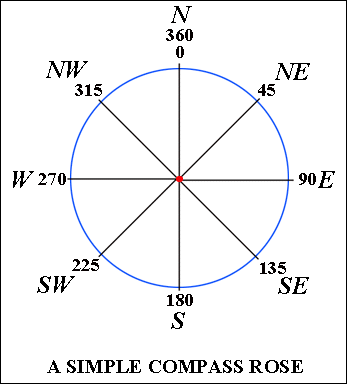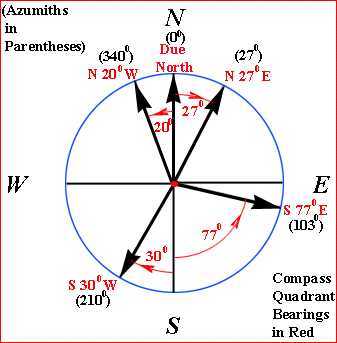 | "There's a reason for the numbers, Lou! 'North', 'south', 'east' and 'west', and 'northeast', 'southeast', and so on are OK as names without numbers! But all the directions in between them are too vague! The names need numbers attached to them. And that's what compass quadrant bearings have - both numbers and names!
Look at the diagram! Consider the direction in which the green arrow is pointing. To get its azimuth, you measure the angle it makes with 0°. That angle is 103° (shown in parentheses). To get its compass quadrant bearing requires three steps. First, decide whether the arrow is closer to N or to S. You can see it's closer to the S. Next, decide whether it's closer to the E or the W. It's closer to the E. Finally, measure the angle between the arrow and the S. That angle is 77°. Now you have the compass quadrant bearing: S 77° E (shown in red). (You always write the N or S first, then the angle, and then the E or W.)" |  |











 LINK TO QUIZ
LINK TO QUIZ